By Howard Gardner
In 1990, in Boston, I attended a conference on school reform. At the end of the last session, a courteous gentleman, clearly from out of town, asked in a tentative manner if I could give him a lift to his hotel. As it was convenient, I readily agreed. At the conclusion of the ride, the man said that he represented a foundation that might want to support some of our research on what makes for effective K-12 education.
Needless to say, I was delighted—except for one thing. The gentleman—whose name was Ray Handlan—indicated that the philanthropy was anonymous; and, as a condition of funding, my colleagues and I would have to agree to keep the source of support secret.
At the time, as a fairly inexperienced researcher, I did not know how to react. So I checked with my Dean, who ultimately checked with the University president, and we were told that it was OK to accept the funds, which we happily did—launching a relationship that lasted for over 15 years.
We got a bit of a kick out of this arrangement. We nicknamed the funder “AF”—for “Anonymous Funder.” We christened Ray Handlan as “Rex Harrison” and his helpful colleague Angela Covert (itself a coincidentally apt last name) as “Agatha Christie.” And so things went smoothly for a while.
Then, one day, everything changed. In January 1997, on the front page of The New York Times, we learned the name of both the foundation—the Atlantic Philanthropic Services—and the funder—Charles (Chuck) Feeney, a very wealthy man who, shortly after WWII, had opened the first duty free shops in airports. Feeney had already given away over half a billion dollars and now, over twenty years later, he has given away almost his entire fortune of several billion dollars—and APS is about to sunset.
Once APS and Chuck Feeney had been unmasked, and no scandal ensued, I felt content with my earlier decision to accept anonymous funding.
Anonymous gifts have a charmed history. The great Jewish sage of the 12th century, Moses Maimonides, declared that anonymous charity was the highest form of philanthropy—especially when donor and recipient were not personally known to one another. The anonymous person would receive no kudos, and the recipient would not feel any obligation to the donor. This characterization seemed valid, even praiseworthy. And so, in the ensuing years, when individuals or philanthropies have requested anonymity, as they occasionally do, I have readily granted it.
But recently I have changed my mind—and here is why I will no longer accept anonymous gifts.
I begin with the practical. Until the rise of the free press, and, more recently, the advent of social media, it might have been possible to request and maintain anonymity indefinitely. But now, when everyone with a keyboard or a cell phone in effect has a megaphone, it’s virtually impossible to retain anonymity. (As was learned in the case of Jeffrey Epstein’s gifts to the MIT Media Lab, a lot of people who were knowledgeable about the arrangement had in effect to take an oath of silence.) Even worse, should an anonymous funder be erroneously unmasked (for example, Funder A is wrongly identified as Person B, then Person B has been inappropriately praised or vilified, and the actual donor—Person A—has the unpalatable option of in effect permitting a false story to circulate unchallenged or losing his/her anonymity.)
But over and above this practical consideration, I contend that there are principled reasons for abandoning anonymity. In this era, thousands of organizations—tiny and gigantic—are attempting to survive by raising funds, and many individuals of wealth have motives for supporting such organizations. Sometimes those motives are idealistic (I believe in a free college education, and I want to support deserving youth who can’t afford tuition); sometimes those motives are dubious (I am involved with fossil fuels, and I want to support individuals who cast doubt on the consensus around climate change for personal benefit); but almost always, courtesy of “the human condition,” motives are mixed—as, indeed, are the motives for anonymity.
The same analysis should be applied to the recipient of funds. Nearly all of us engaged in fundraising for putatively worthwhile causes think of ourselves as praiseworthy. But examined more closely, fundraisers, including myself, have a mixture of motives, some more praiseworthy than others. (As an example, should I receive a sizable grant, I get appreciation from many quarters and, perhaps as well, favorable publicity for our work.) Moreover, nearly everyone involved in fundraising feels pressured to achieve the explicit or implicit goals of the donor. Accordingly, the recipient is confronted with a moral dilemma when, for whatever reason, the program or project has not sufficiently fulfilled the funders’ goals.
I think that this calculus should apply not only to individual donors but also to foundations. Foundations typically describe themselves in praiseworthy terms, and sometimes that praise is well merited. (I have been dependent on, and grateful for, the generosity of foundations for decades.) But when one takes a closer look at foundations—for example, the sources of funds (“Behind every great fortune, there is a great crime” -Balzac), the ways in which they are invested, the salaries of top executives, and the composition and mode of operation of the board—a more complex picture typically emerges.
I am not so naïve as to think that any of us—employee, fundraiser, researcher, NGO executive board member, philanthropoid (the allocator of gifts), or philanthropist (the source of gifts)—is beyond sin. Indeed, if we all had to pass a screening—and who would do the screening?—the entire philanthropic sector would likely cease to function altogether.
And so I recommend a different tack: instead of unachievable and often problematic anonymity, complete transparency. Those of us who work in mission-driven organizations—whether scientific, educational, or charitable—should make public all of our funders. And by the same token, those who work in philanthropic organizations should make public the source of our funds, how they are invested, and how they are distributed. In this way, interested parties can render a holistic judgment about the merits, or lack of merits, of the funding arrangements—just as we routinely make holistic judgments about the institutions concerning which we have some knowledge.
You may wonder, “Well, isn’t this already done?” It’s true that the largest foundations in the United States are obliged to fill Form 990, which reveals some of this information. But the vast majority of funders—whether organizations or individuals—operate below the radar screen. I can tell you from personal experience that it is virtually impossible to find out the information that I have just itemized.
To sum up: Since we live in a time when efforts at secrecy almost invariably fail, it’s better to be “up front” about one’s goals and one’s finances, and let the philanthropic chips fall where they may.
So what should I do, in the future, if asked by a potential philanthropist to provide anonymity? I would listen carefully and sympathetically to their rationale. But then I would respond in the following manner: “I have no intention of broadcasting your generosity if you would prefer that I don’t. But on my website, I do list all of those who generously support my work. I hope that you will understand and accept these conditions—and if you do not accept, I respect and will not challenge your decision.”
Note: I thank Lynn Barendsen, Sissela Bok, Wendy Fischman, Kirsten McHugh, Danny Mucinskas, Mal Salter, Dennis Thompson, and Ellen Winner for comments on an earlier draft.
© 2019 Howard Gardner







